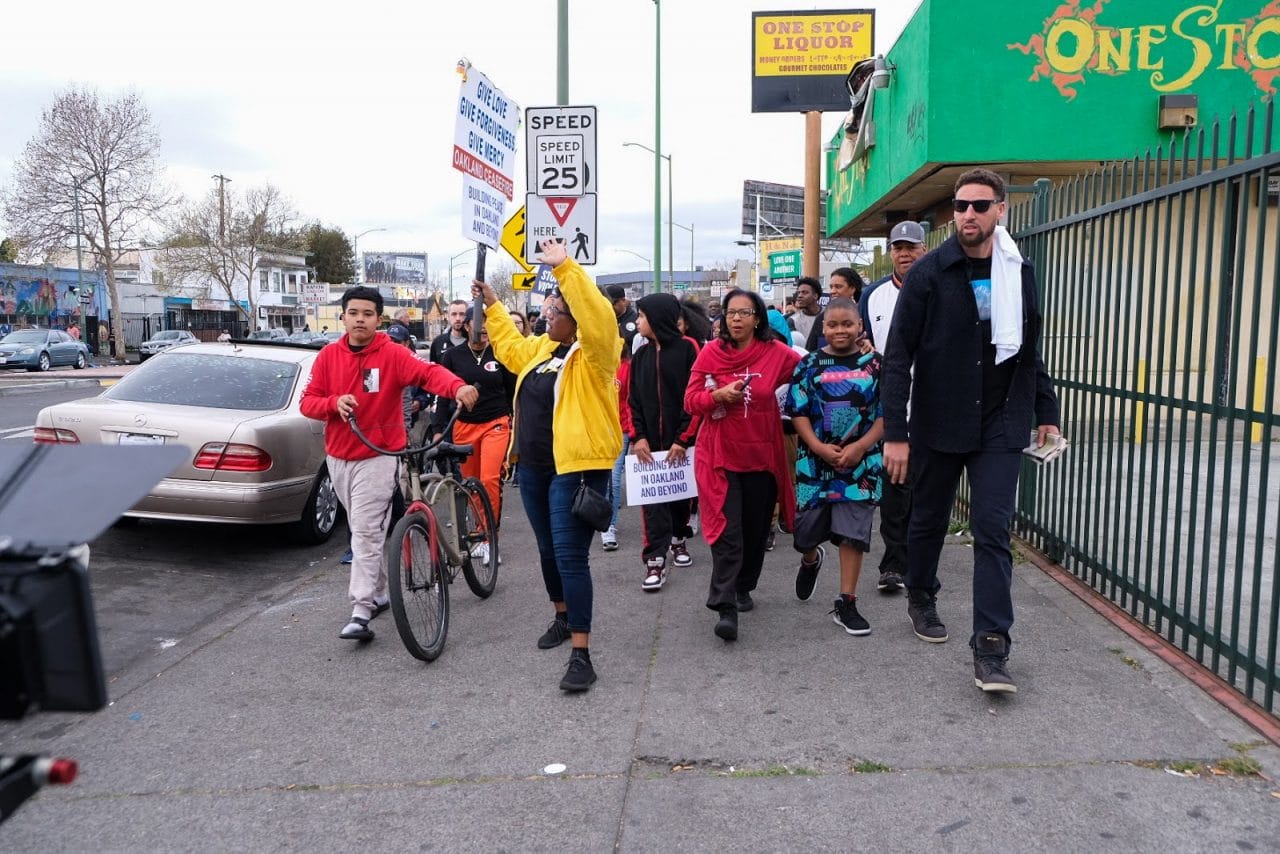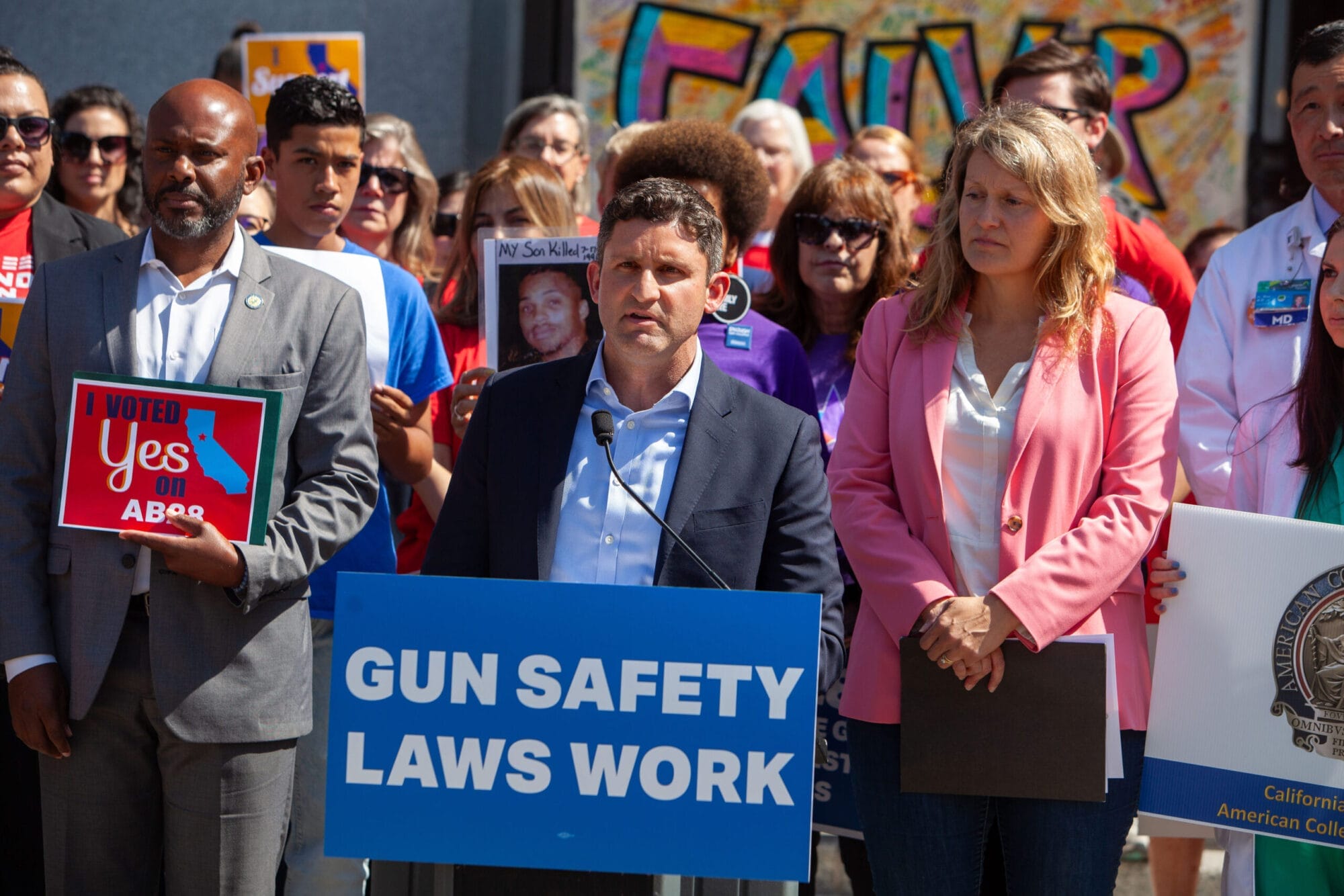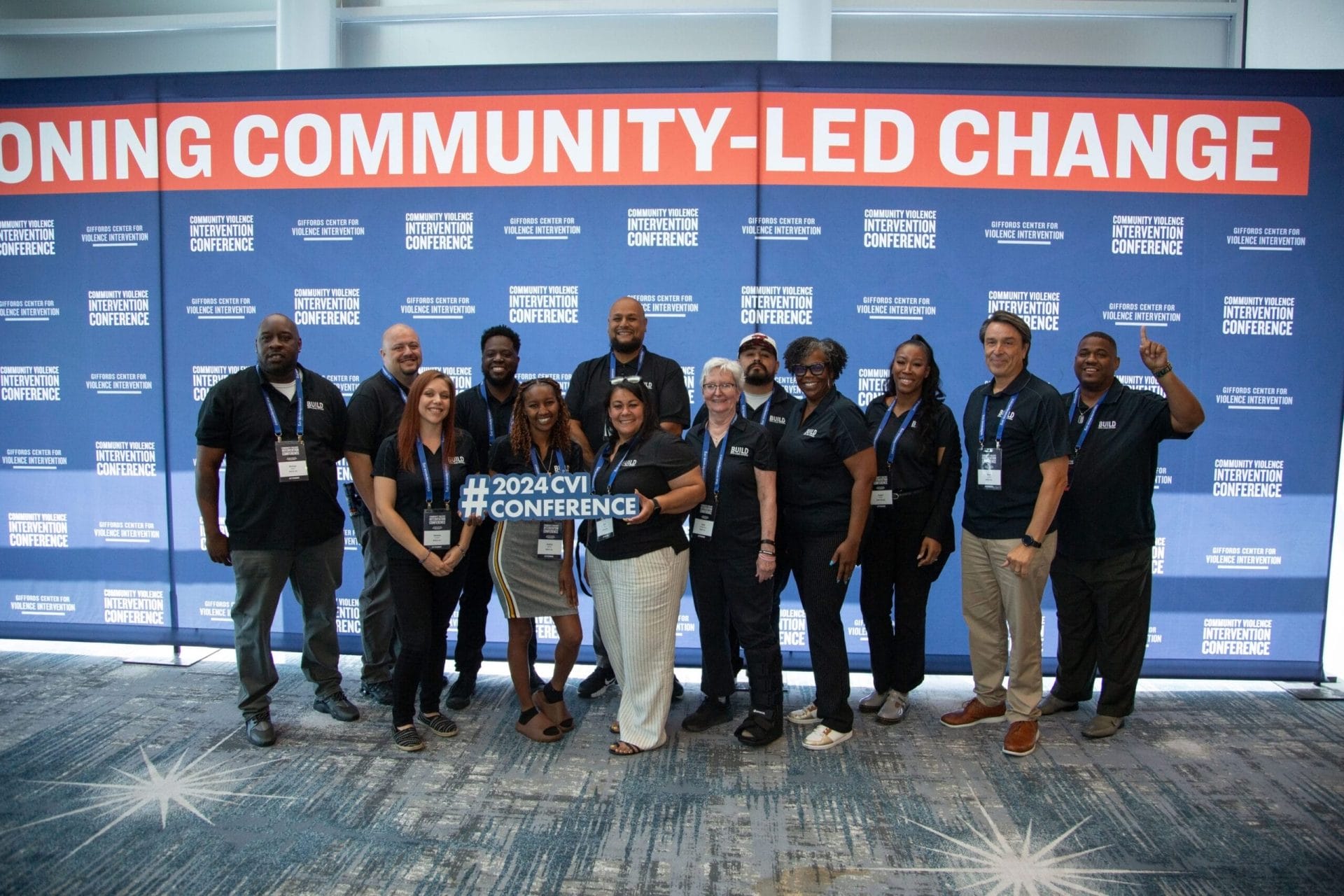
Celebrating Champions of Community Safety
Our second annual CVI Conference reflected the growth of a transformative movement to end community violence.
There’s a lot that motivates me to continue working to combat community violence.
I know firsthand how it impacts cities, neighborhoods, and families. I’m surrounded by people who are dedicated to a cause that speaks to all of us. And I know just how effective the solutions and policies are—when we get governments to implement them.
Community violence, one of the most prevalent drivers of the gun violence epidemic, is defined by the CDC as violence between “unrelated individuals, who may or may not know each other, generally outside the home.” This includes homicides, shootings, stabbings, and physical assaults. The root causes of community violence are complex and multifaceted, often stemming from systemic inequities, generational trauma, lack of economic opportunities, and inadequate access to education and social services. These factors can create a cycle of violence that perpetuates itself across generations.
The consequences of community violence are devastating, particularly for communities of color, which are often the most neglected in terms of resources and support. However, there is hope in the form of community violence intervention (CVI) programs and the dedicated individuals working to bridge service gaps and promote healing. These programs, often led by people with lived experience of violence, focus on interrupting cycles of retaliation, providing support to affected individuals, and addressing the underlying factors that contribute to violence. Despite their significant impact, chronic underfunding and limited recognition make it challenging for many to fully appreciate the effectiveness of these programs.
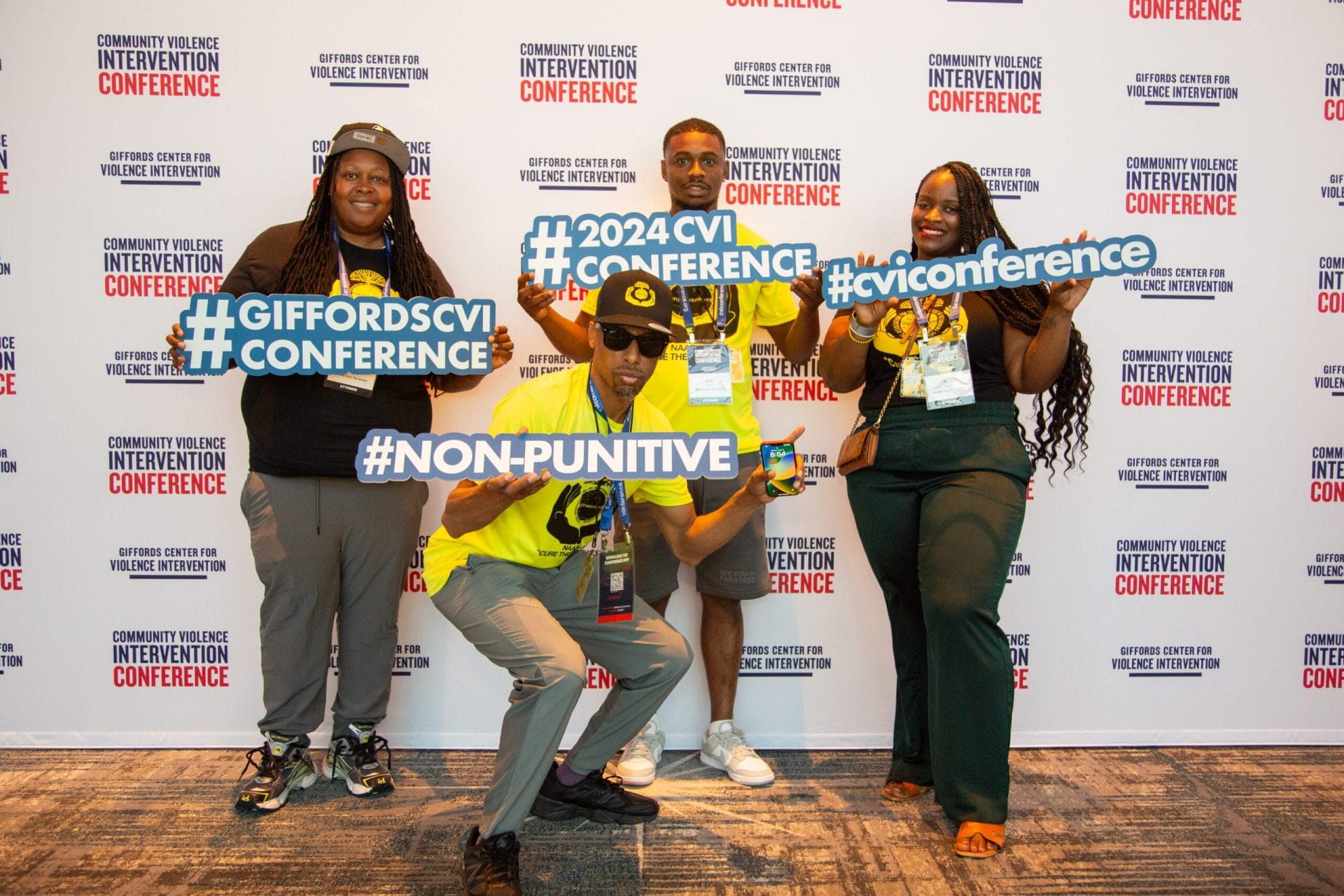
So, as part of the team at GIFFORDS Center for Violence Intervention, I am deeply honored to contribute to our annual Community Violence Intervention Conference. This event, first organized in 2023, was a groundbreaking effort designed to bring together hundreds of experts from around the world. Aligned with our mission to champion community-led approaches to violence reduction and elevate the voices of those directly impacted, we sought to offer the field a space to have these critical conversations.
Inspired by the enthusiasm we witnessed for this growing movement, we expanded our reach and were honored to welcome nearly 1,000 community leaders and advocates to Los Angeles in June for our second annual CVI Conference.
Throughout the planning process, we kept one question at the forefront of our minds: “How will this benefit the community?” For example, could we create a way for attendees to earn a credential out of attending the conference that could assist them professionally? Or how can we ensure that every breakout session features a healing opportunity in some way?
Ultimately, our goal was to create an inclusive space where all participants, especially those with perspectives often overlooked, felt their voices mattered. We prioritized grassroots organizers, community leaders, and individuals with lived experience, recognizing that their insights are often more necessary for creating effective policies than those of researchers or officials removed from daily realities. By bridging the gap between on-the-ground experiences and top-down policy work, we sought to emphasize what many of us know to be true—that the solutions we seek come from within communities themselves.
STAY CONNECTED
Interventions are most effective when they are supported by strong community networks. Sign up for Giffords Center for Violence Intervention’s newsletter to learn more about what’s happening in the field, relevant legislation, and funding opportunities.
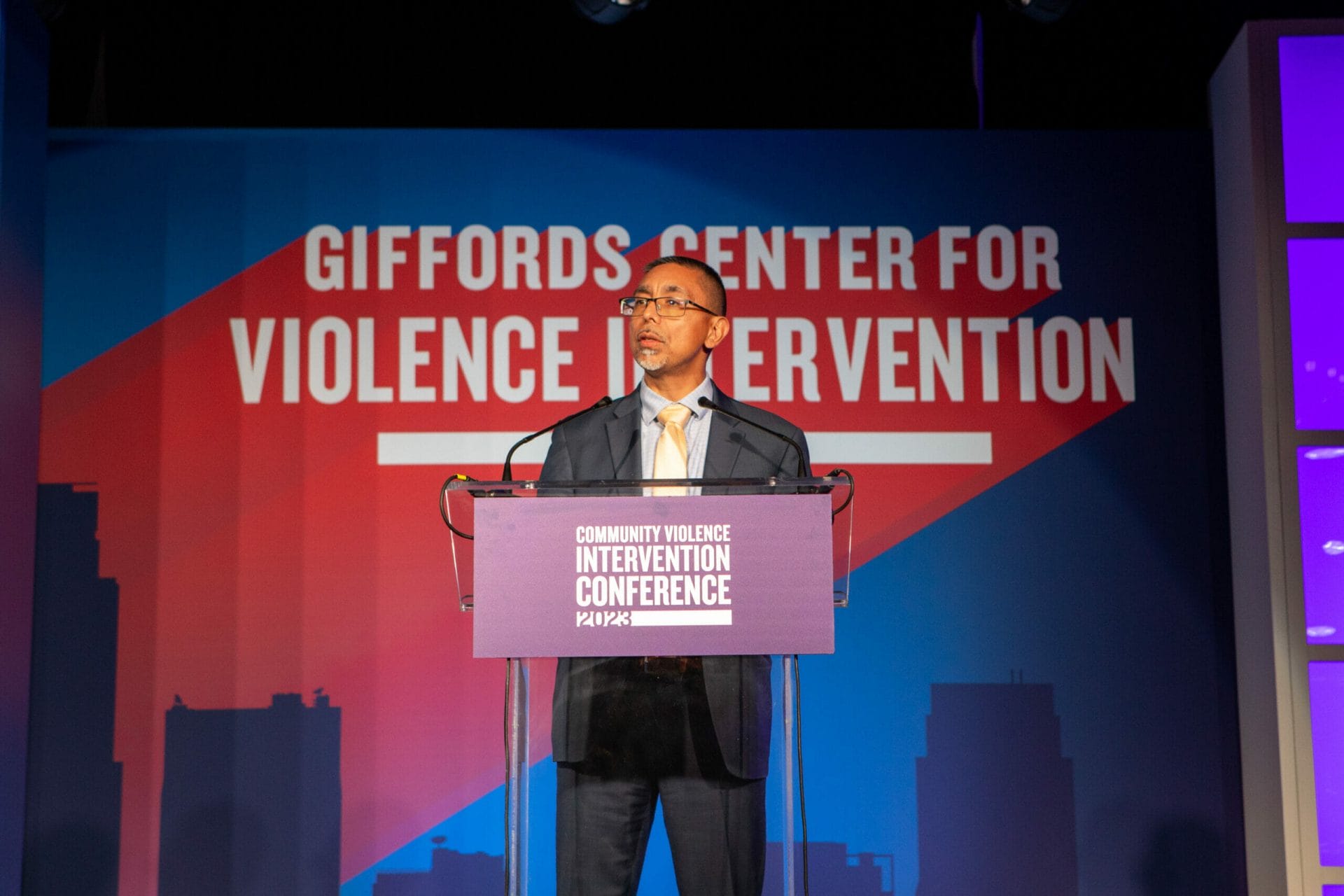
As I ran back and forth through the conference space, I was heartened to see folks reconnect with old friends and meet virtual acquaintances in person for the first time. This was particularly meaningful because after the onset of COVID-19, our reliance on technology has limited our ability to foster genuine human connections. But the CVI field thrives on these connections, making it crucial to have spaces that break down barriers to access and allow us to move beyond silos and echo chambers to support one another.
As the day went on, I continued to hear from attendees who were excited to share their newfound insights into addressing violence. Our conference program was designed to feature a diverse range of voices and perspectives—in terms of expertise, geography, race, ethnicity, language, and subject matter—to inspire this exact response. It featured a range of content, including plenary sessions, networking, and breakout sessions, as well as a wide variety of keynote speakers: Melvyn Hayward from the Los Angeles Office of Gang Reduction and Youth Development, US Ambassador to Trinidad and Tobago Candace Bond, Dr. Andrew Papachristos of CORNERS, Mannone Butler of the NBA Social Justice Coalition, and our very own GIFFORDS Executive Director Emma Brown and former Congresswoman Gabby Giffords.
We also know that innovative ideas for tackling community violence aren’t limited to the United States. There are amazing experts doing incredible work all around the world, and we wanted to make sure their voices were heard too. That’s why we were especially proud to continue our partnership with USAID to include an international track that highlighted impactful work in Latin America and the Caribbean, offering Spanish translation to enhance a global learning exchange around violence reduction work. This approach aimed to offer attendees the opportunity to either deepen their understanding of familiar work in the field or explore entirely new areas.
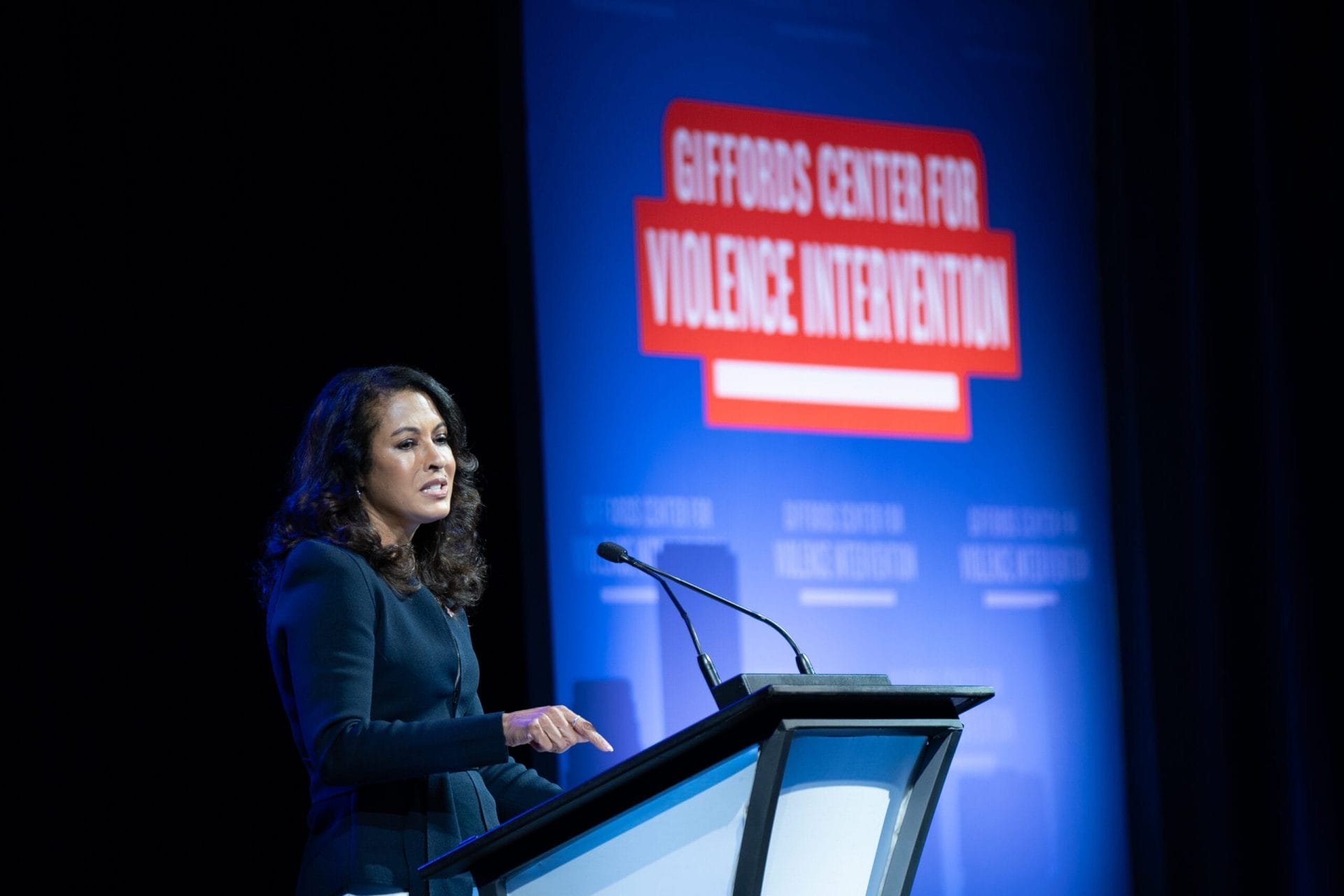
As a woman in this field, I was particularly inspired by the strong female voices at the conference. Presenters and attendees shared their unique experiences, demonstrating how they’re reshaping traditionally male-dominated spaces in community violence intervention. One remark that particularly resonated with me came from Tina Padilla: “I was brought to this work by strong women.” It was empowering to see how women are not just participating but actively transforming this field, bringing diverse perspectives and innovative approaches to our collective efforts.
Gun Violence Is a Public Health Crisis
Just as we were settling into our second day of the conference, news broke that the Surgeon General had officially classified gun violence as a public health crisis in the United States. The energy in the room shifted dramatically as 1,000 advocates and experts, who had long known this reality, were finally validated by the nation’s top public health authority.
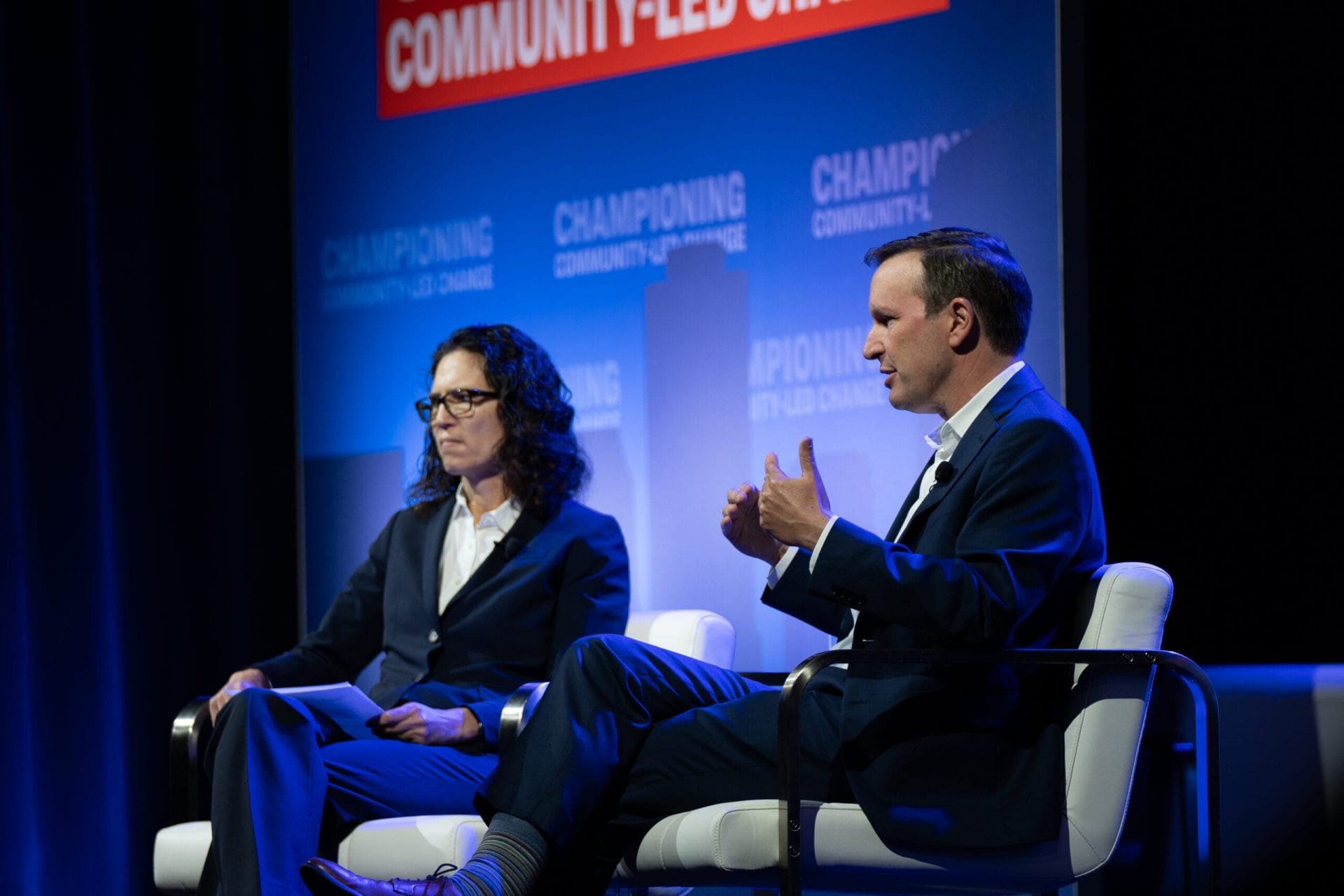
This announcement set the stage for a powerful morning plenary featuring Senator Chris Murphy in conversation with Nina Revoyr, the executive director of Ballmer Group’s Los Angeles team, about legislators’ roles in advancing community violence intervention. As someone who has worked in direct services and has been trained as a gun violence researcher, I found this discussion particularly impactful, given how rare it is for frontline professionals to engage directly with lawmakers. As Senator Murphy spoke, I remember hearing the quiet affirmations in the ballroom as he said, “There were many years where I was not doing enough and now I am making up for lost time because I should have done more.”
Eddie Bocanegra, a senior advisor for community violence intervention at the Department of Justice, gave a keynote speech that further reinforced this sentiment, emphasizing the federal government’s recognition of community-based efforts and his personal commitment to providing deserved support. The day felt like a turning point where we could no longer avoid facing the consequences of inaction at the local, state, and federal levels in supporting the lifesaving work of community violence intervention programs.
Recognizing Remarkable Community-Led Organizations
For me, one of the most memorable parts of the conference was when we proudly presented the annual Lifesaving Service Award to Aim4Peace, a CVI organization in Kansas City, Missouri. This award was created to highlight the exceptional work of community-led organizations making a significant impact in reducing violence and promoting healing, and it includes a $30,000 donation to support their mission. Following an inspiring video showcasing their efforts, Rashid Junaid and Jamal Shakur of Aim4Peace took the stage and spoke passionately about their journey.
They shared innovative strategies, stories about the lives they’ve touched, and the challenges they’ve overcome. In a touching moment of fellowship, Rashid, the executive director, turned to Jamal, a longtime violence intervention specialist, and said, “This man is responsible for the 75% reduction in shootings in his neighborhood.” Their dedication was unmistakable, clearly illustrating why they were nominated and chosen for this recognition. To witness the genuine support from fellow attendees was a visual representation of the deep solidarity within our field. It reaffirmed that at its core, community violence intervention is built on a foundation of mutual respect and a shared commitment to saving lives no matter where you are from.
What truly struck me, however, was a moment I witnessed outside the conference space. While chatting with the Aim4Peace awardees about their conference experience, I saw Eddie Bocanegra approach Jamal. In a genuine exchange, Jamal said, “Thank you for the work you’ve done, man. You’ve paved the way for so many of us.” Eddie responded, “No, thank you for the work you’re doing. You’re taking it to the next level.” This spontaneous interaction, away from the spotlight, embodied the deep respect and camaraderie within our field. It wasn’t performative or for show; it was a natural expression of mutual admiration between peers dedicated to the same overall mission.

Reuniting at this conference every year serves as a powerful reminder of why we do this work and the incredible caliber of people committed to our cause. While our work is undeniably challenging, often pushing us to our limits, these gatherings highlight our collective resilience and the tangible impact we’re making. As we advocate for community violence intervention as a pillar of our national public safety strategy, we must continue to transform our passion into action through shared insights, experiences, and resources. Witnessing the depth of expertise and commitment around us, I’m convinced that the future we envision for our communities is within our reach. GIFFORDS Executive Director Emma Brown said it well:
To everyone who joined us in Los Angeles, your presence and participation were invaluable. Your daily efforts and the insights you provided over these two days are the heartbeat of this movement. We are honored to learn from you, support your endeavors, and stand alongside you in this critical mission to save lives. We’ll be back in 2025, and in the meantime please check our website for updates and sign up for our newsletter for the latest CVI news.
As we look ahead and begin planning for next year’s conference, we’ll keep asking, “How will this benefit the community?” so that together, we are not just talking about change—we are actively creating safer, more just communities.

SPOTLIGHT
COMMUNITY INTERVENTION
Community violence intervention focuses on reducing the daily homicides and shootings that contribute to our country’s gun violence epidemic. We created Giffords Center for Violence Intervention to champion community-based efforts to save lives and improve public safety.
Read More